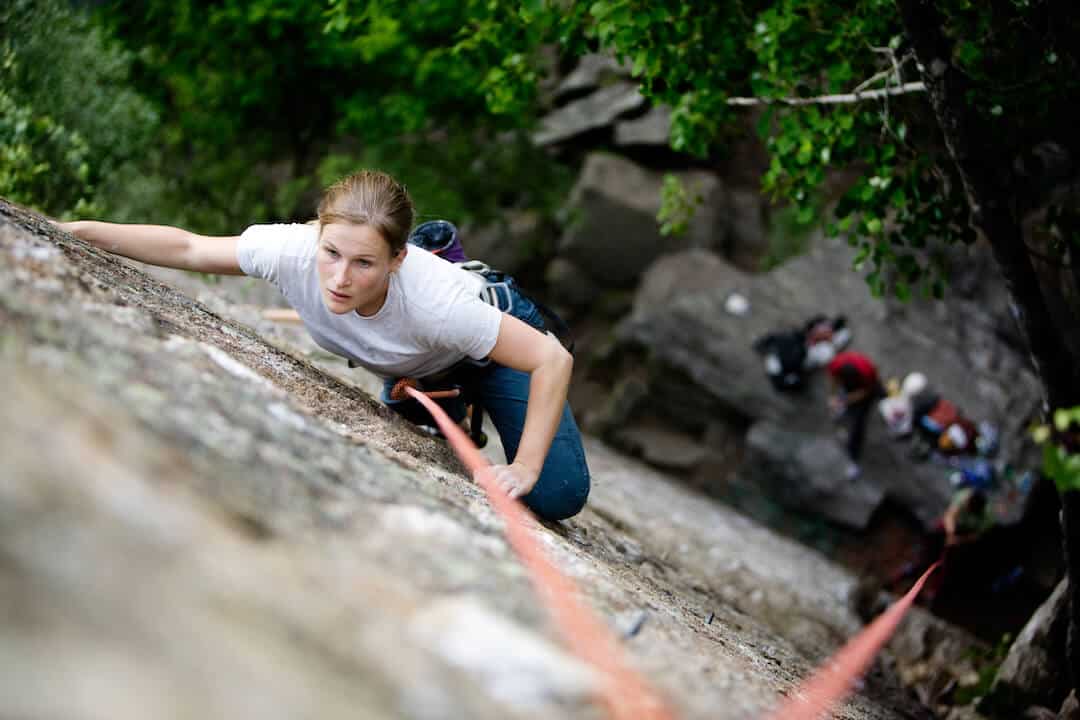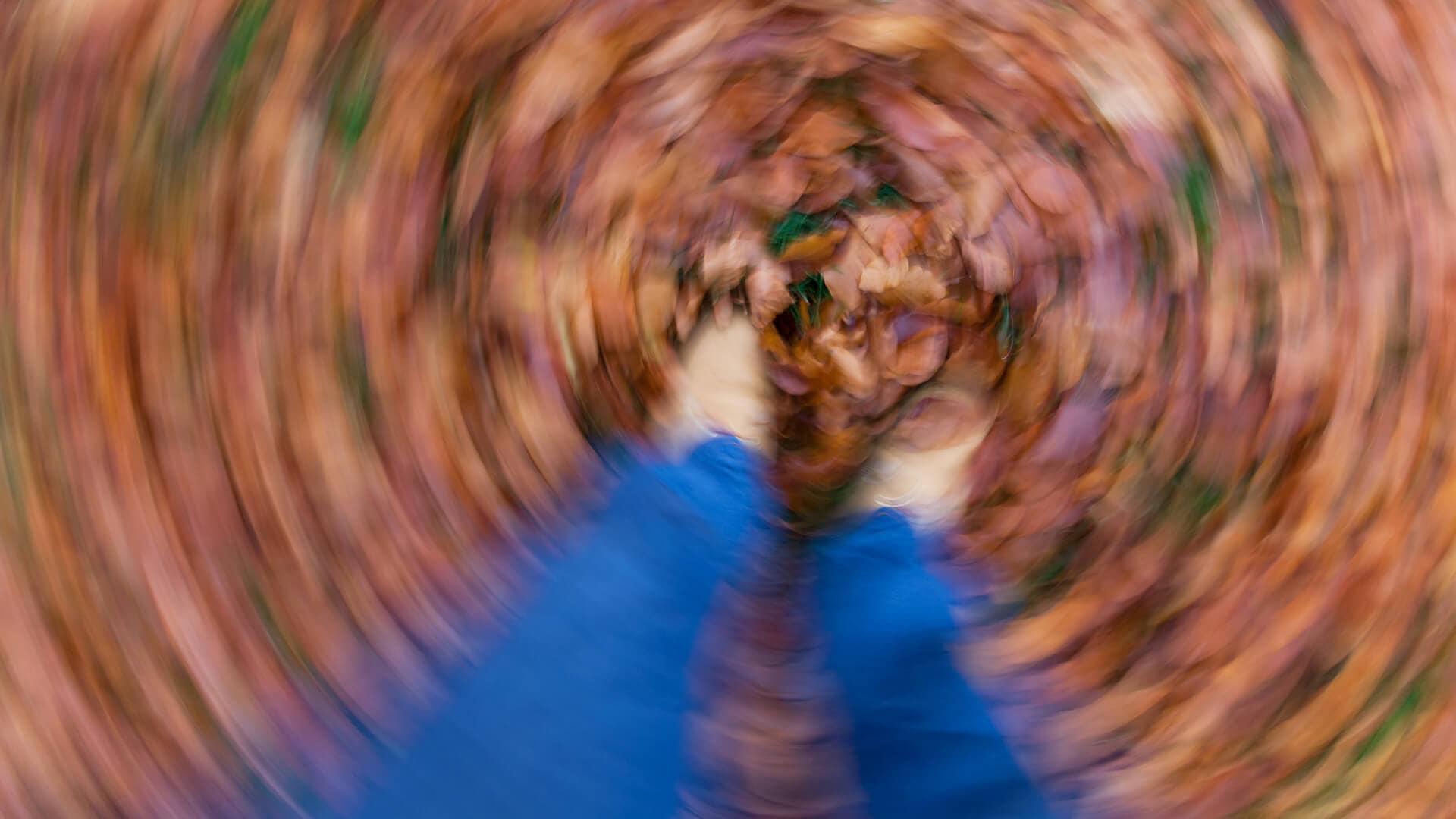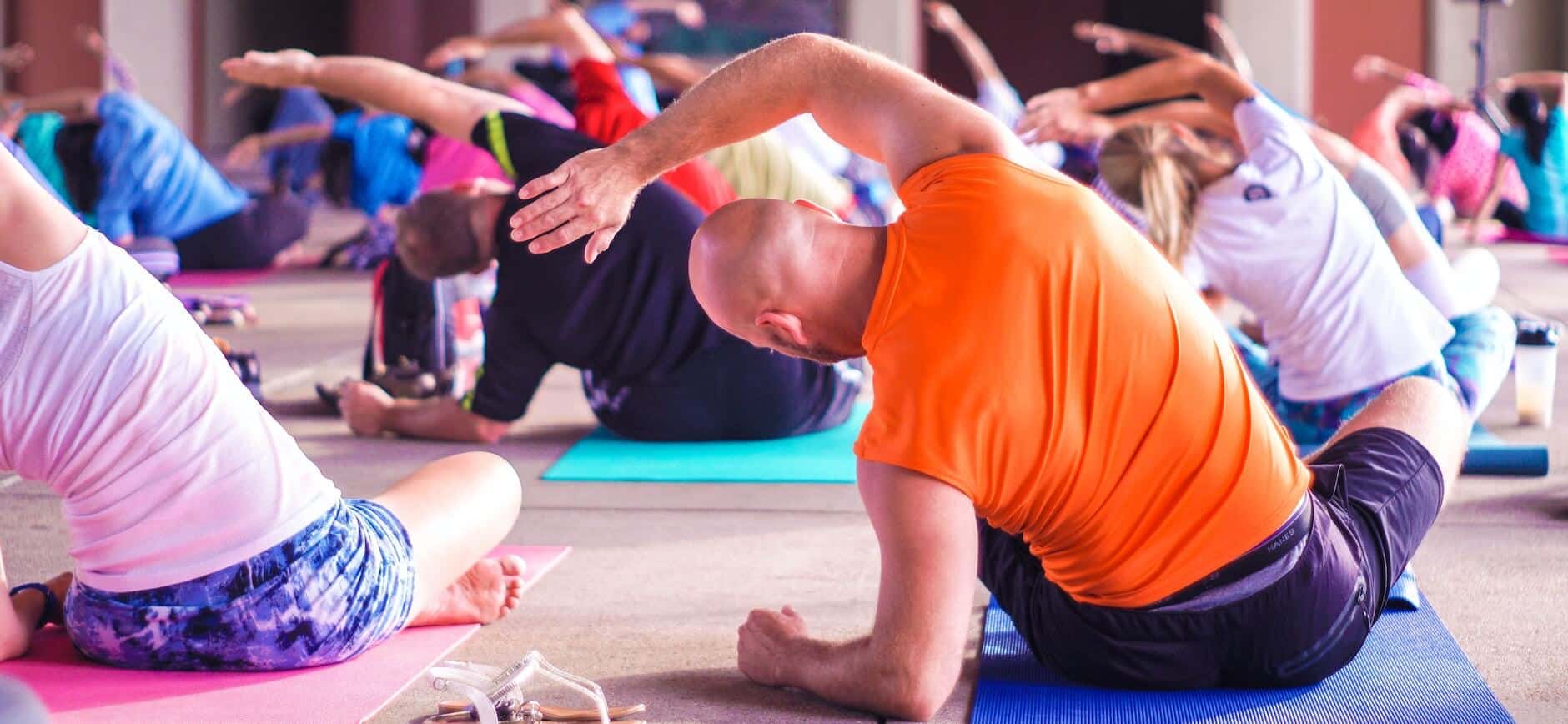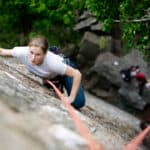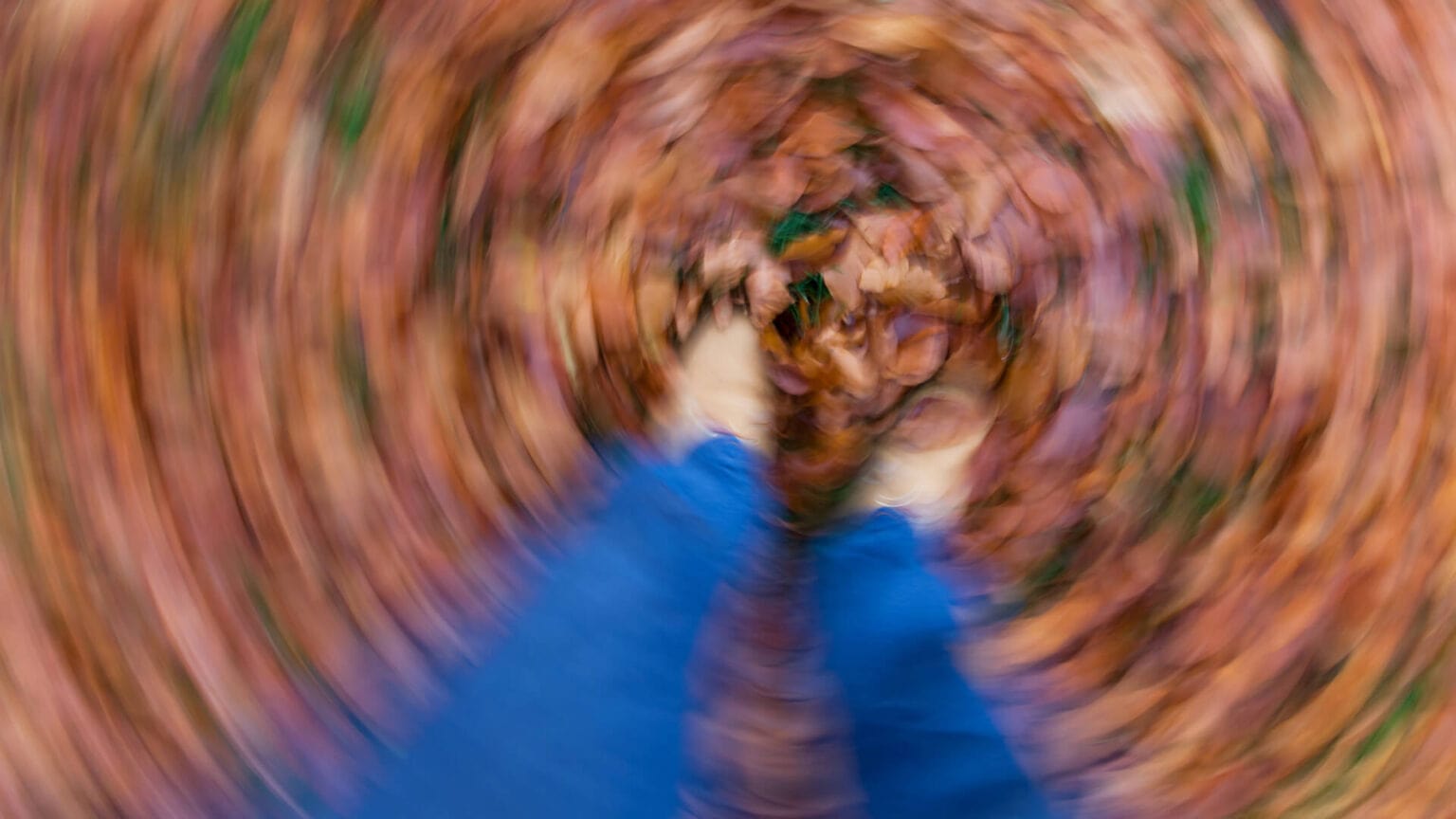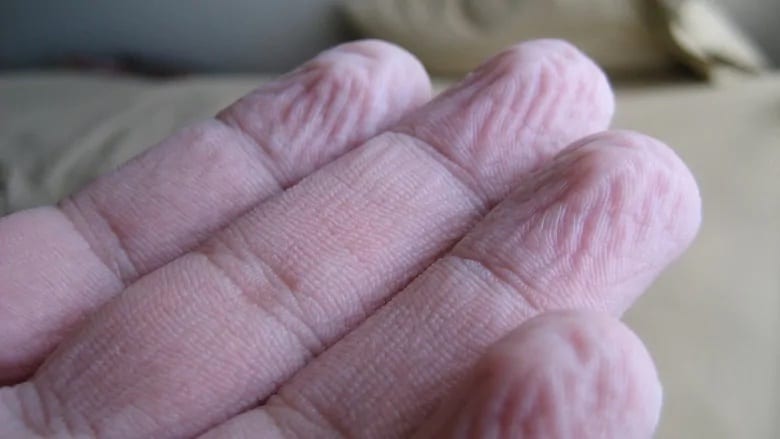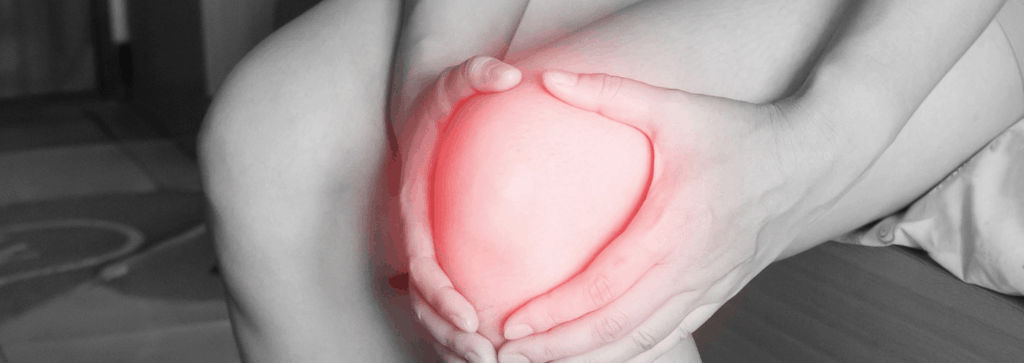If you’ve ever had one, you’d know that an ankle sprain can be REALLY painful.
Yet for some reason they are often under-appreciated, and often not rehabilitated as well as other injuries.
The result can be an ankle that isn’t as trustworthy, and remains painful longer than it really should.
Worst of all is the problem of recurrence and repeat episodes.
Lachlan Sutherland has written this blog with the aim of clarifying what happens with an ankle sprain and to show how the rehabilitation process SHOULD go so that you get the best result.
An ankle sprain is one of the most common sporting injuries. It most usually occurs when the ankle is forced into inversion (turned inward).
They can also occur when the ankle is forced into eversion (turned outward), however they are far less common.
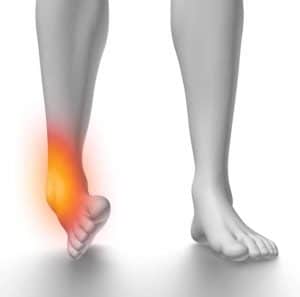
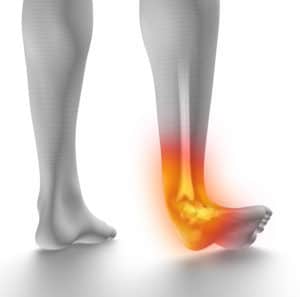
Ankle Anatomy
The structures of concern for the ankle include 4 major bones, 3 major ligaments with a further grouping of ligaments.
There are 6 major muscles that play a key role in controlling the ankle with the help of a nerve supply.
The bones and ligaments provide the ‘passive stability’ to the ankle. It’s these six muscles that provide the dynamic stability.
Bony anatomy
- The ankle joint is created by the talus bone and the lower ends of the fibula and tibia.
- The talus sits between these two long bones of the lower leg, with the fibula on the outside and the tibia on the inner-side, creating the bony sides of the ankle
- The bony landmarks are the lateral malleolus (fibula) and the medial malleolus (tibia)
- Situated under the talus is the calcaneum (better known as the heel bone)
- The joint between the talus and the calcaneum is the subtalar joint
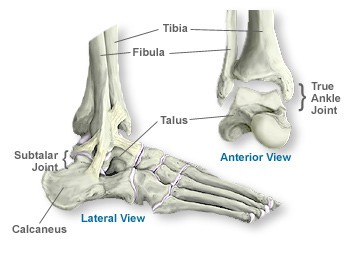
Ligament anatomy
- The ligaments involved on the outside of the ankle are the anterior talo-fibular ligament (ATFL), calcaneo-fibular ligament (CFL) and the posterior talo-fibular ligament (PTFL) on the outside and the deltoid ligament on the inner side of the ankle
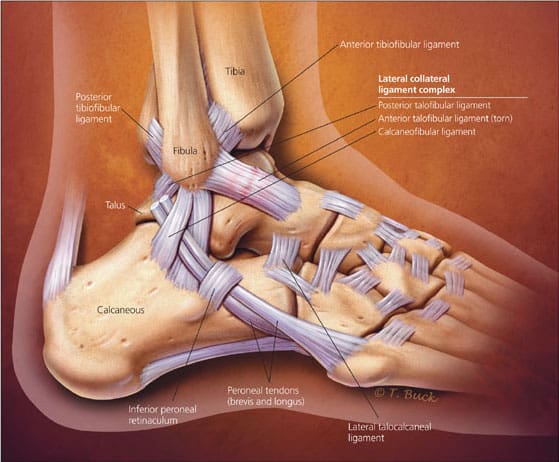
Muscle anatomy
- The 3 most notable muscles of the ankle for dynamic stability are the two peroneal muscles on the outer side (peroneus longus and peroneus brevis) and the tibialis posterior muscle on the inside.
- Three other important muscles are the gastrocnemius and soleus which together make up the calf, and tibialis anterior that runs along the front of the ankle.
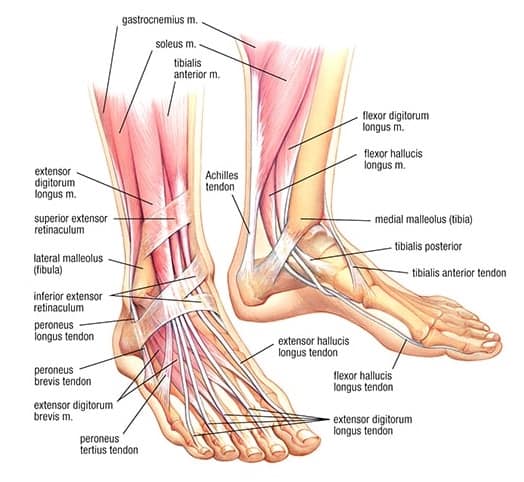
- Together, the talocrural and subtalar joints allow the foot to move in all directions
- Ligaments provide ‘passive stability’, ie they limit the joint range of movement
- The muscles provide movement and ‘dynamic stability’ to the joints ie they control movement before reaching end of range.
Nerve anatomy
Let’s not forget these super important anatomical structures – the nerves.
Nerves are critical to coordinating movement, and providing feedback to the brain about ankle position and the effect of muscle activity.
The tibial nerve is located on the inside of the ankle and the sural nerve on the outside of the heel. At the front of the ankle are the superficial and deep peroneal nerves.
The sural nerve is often involved in inversion injuries due to being stretched or tractioned when the ankle rolls over.
What happens in an ankle sprain?
- Inversion ankle sprains are the most common form of ankle sprain, involving the structures of the outside of the ankle
- This can occur when landing awkwardly on the outside of the foot or stepping onto uneven ground, causing all of the weight to go onto the outside of the foot
- When the ankle is forced into inversion, the ATFL and CFL most notably are put on stretch. If this force exceeds the tolerance of the ligament, it will be strained
- The peroneal muscles are usually put on stretch as well, which usually causes more of the bruising for an ankle sprain
- The peroneals are usually active in attempting to control the inversion movement, which can result in an avulsion fracture of the base of the fifth metatarsal
- The sural nerve is also put on stretch, its injury contributing to pain and sometimes producing altered sensation on the outside of the foot
Looking for some free physio advice?
You can speak with one of our physios with no strings attached!
Just call us on 8356 1000 or book online for a FREE Physio Phone Call
Grading ankle sprains
There are three grades of ligament sprain, which is determined by the severity of the sprain.
Grade 1
- This is the lowest level of a sprain.
- This usually only affects a small amount of the ligament fibres, which leads to minimal or no laxity (laxity is when a ligament or joint capsule has been stretched/sprained and doesn’t provide the same level of stability).
- These types of ankle sprains can still be painful, however can be quick to recover from (2-3 weeks)
Grade 2
- This is the middle level of sprain
- This usually affects a larger number of the ligament fibres, which leads to laxity and pain.
- This usually takes longer to recover from with specific exercises required to improve general stability (4-6 weeks)
Grade 3
- This is the highest level of sprain
- This usually results in a full tear of the ligament, which leads to a large amount of laxity, however doesn’t usually cause pain.
- This usually takes awhile to recover from and in some cases requires surgery.
Principles of Ankle Sprain Rehabilitation
Early stage rehabilitation
The biggest focus of the initial rehabilitation period is returning to full mobility and full weight-bearing
In the next stage, there is a need to regain full strength of the calf and the stabilising muscles of the ankle (the Peroneals and Tibialis Posterior)
Once this has occurred usually the pain will have reduced. However, this isn’t where rehabilitation ends.
It is where rehabilitation really starts.
Proprioception
It is important to work on balance and proprioception.
Because sensory nerves are affected by being over-stretched, there is altered messaging from the joint and muscles. Re-establishing normal proprioception is critical to avoiding repeated sprains.
Proprioception can be thought of as our body position sense. It is how we know where our body is without looking.
Proprioception uses the internal map or picture that the brain holds about our body and relies on accurate information about position from the body.
This picture is affected when we experience an ankle sprain, which affects our control of the ankle if it isn’t included in the rehabilitation process.
If proprioception is not rehabilitated adequately, the risk of ankle reinjury and other lower limb injuries.
Sport-specific training
If you are returning to sport or general exercise, it is important that the rehabilitation covers the type of activities that you need to do.
For example, if you are returning to football it is totally inadequate to stop the process when you are simply painfree, or you have regained your strength.
It will be important to train your proprioception and strength to higher levels.
It will need to include dynamic control of running and fast change of direction, jumping and landing, and any other activity that is going to be involved.
Consequences Of Inadequate Rehabilitation Of Ankle Sprains
If rehabilitation isn’t completed adequately, there is a risk of consequences like:
- Recurrent sprains
- Ligament laxity
- More joint surface injury
- Difficulty on uneven terrain
- Altered balance and proprioception
- Below optimum sporting performance
- Ongoing pain
Take Home Messages
- Ankle sprains are common, but also commonly poorly rehabbed.
- Poor rehabilitation leads to higher chances of recurrence, ligament laxity, joint surface damage, pain and impaired sporting performance.
- Completing rehabilitation means going beyond being painfree. This is usually the point when the interesting and sport-specific rehabilitation starts.
